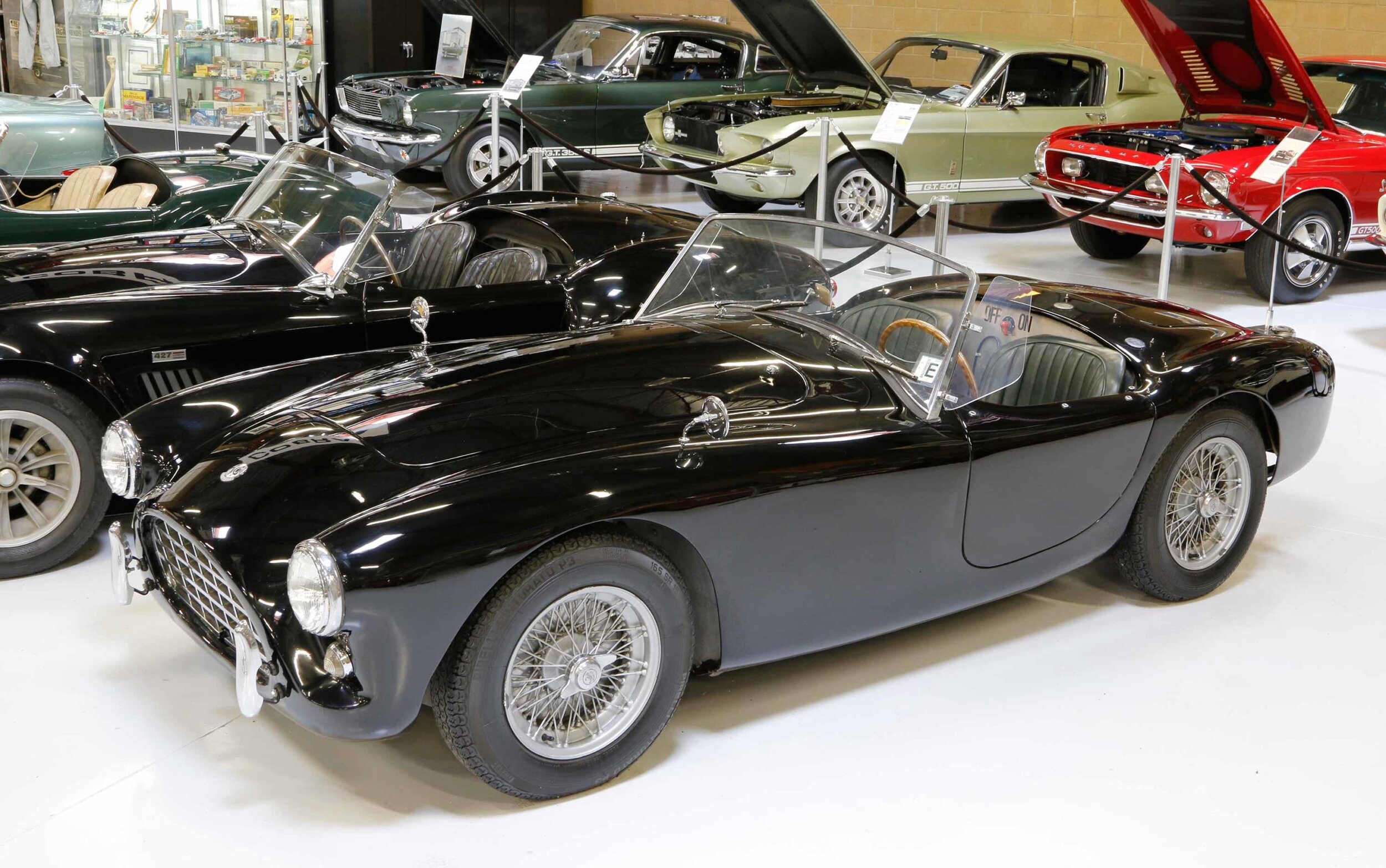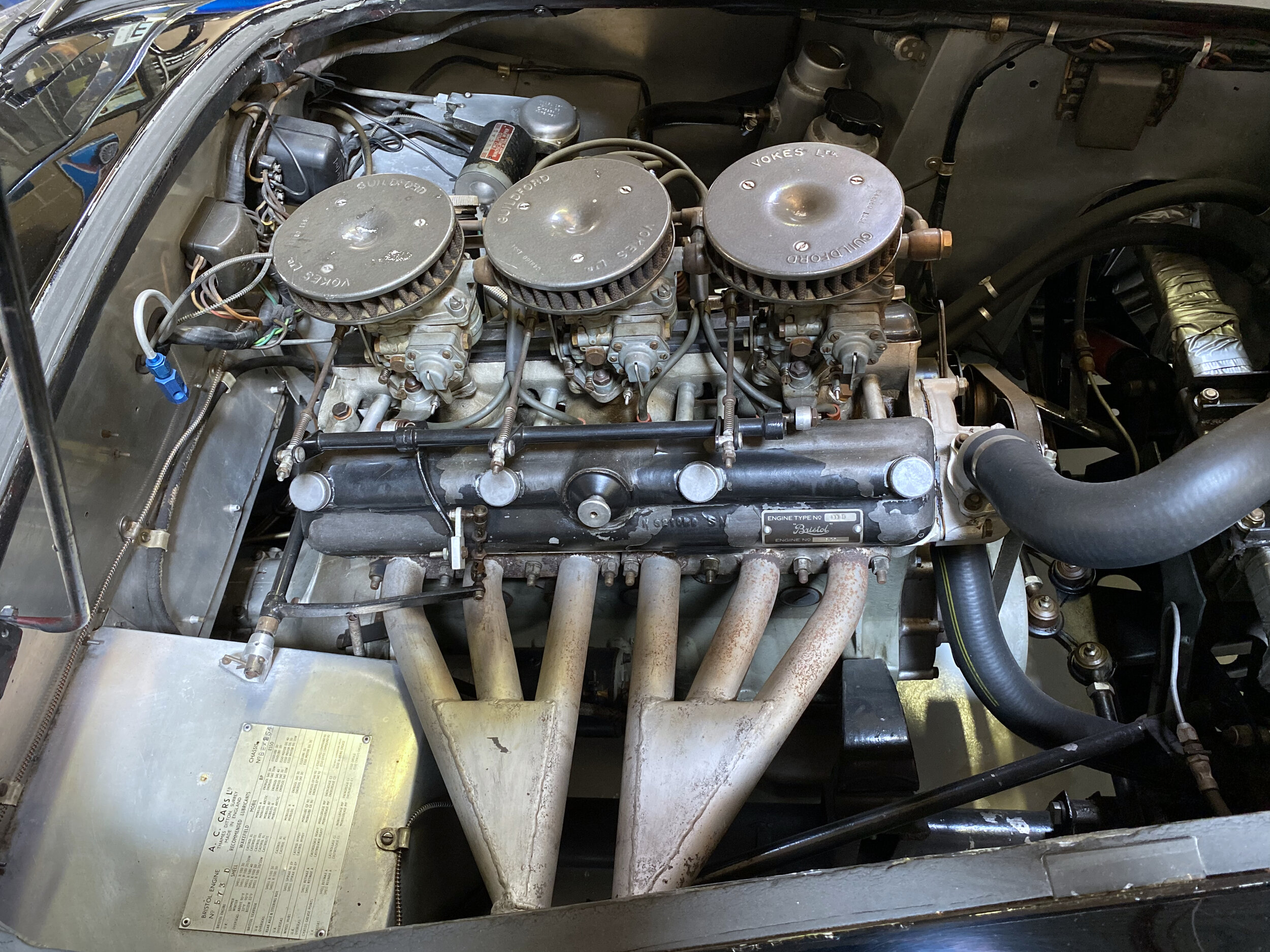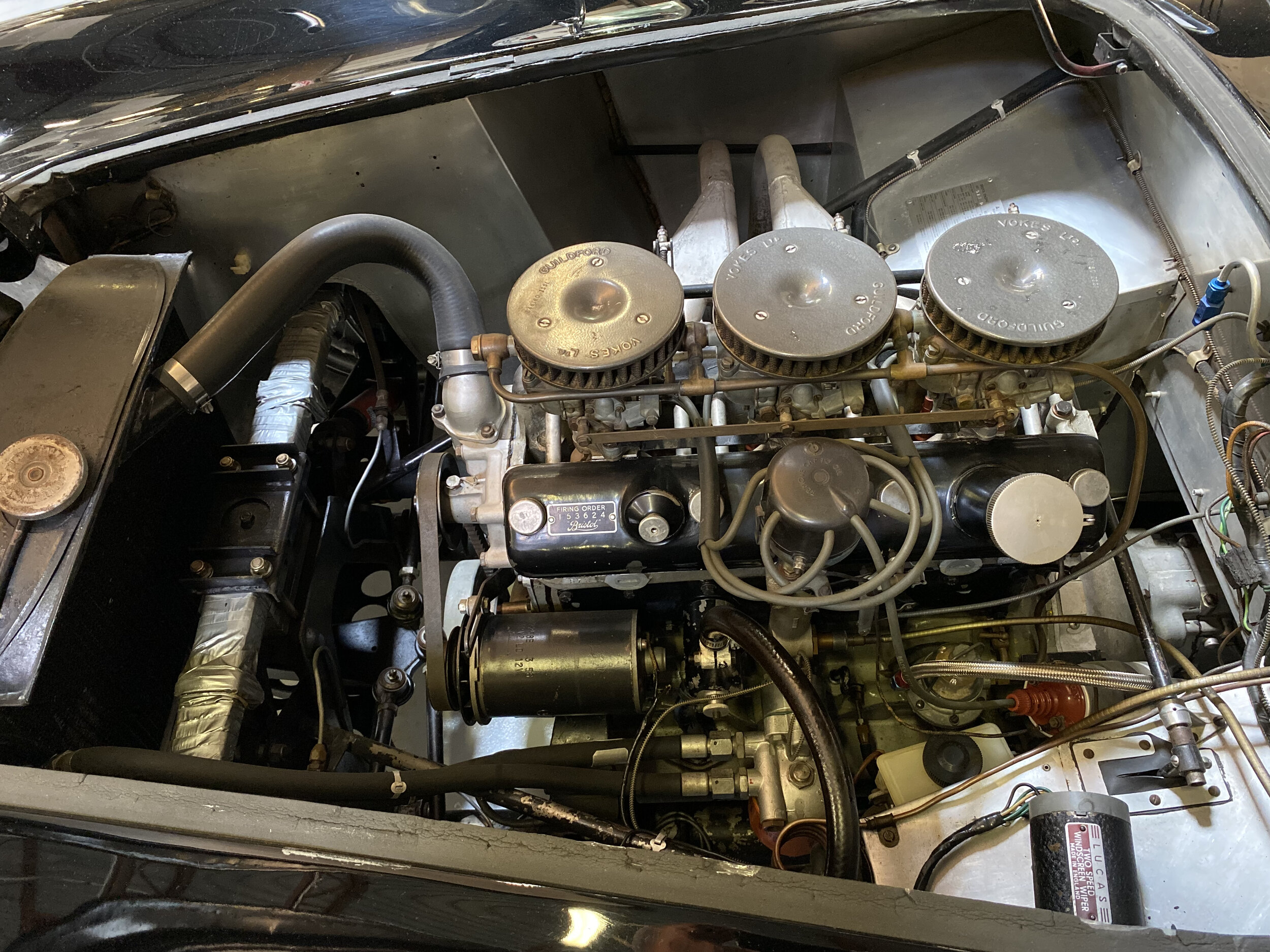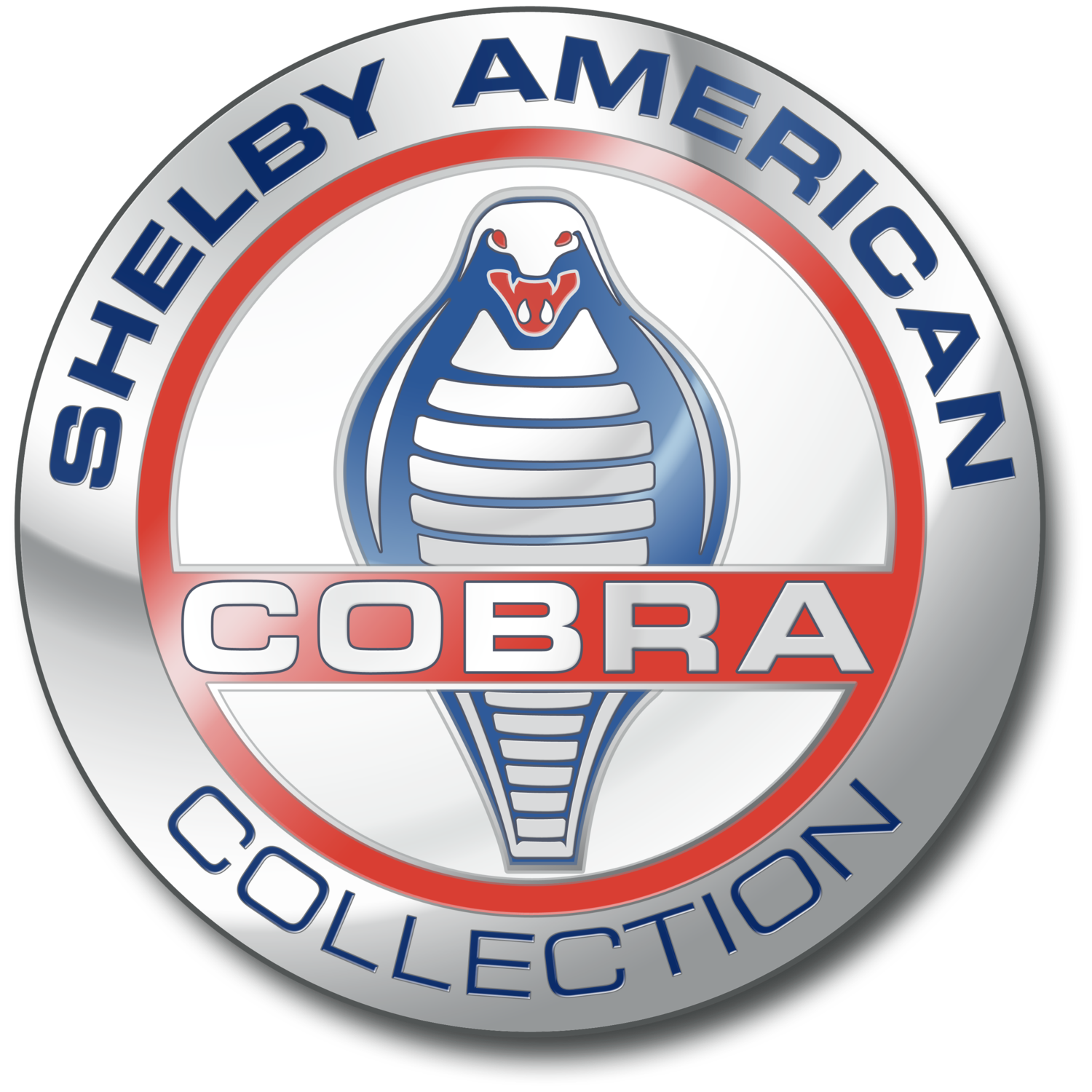1957 A.C. BRISTOL BEX254




Details & History
Chassis Number: BEX254
Horsepower: 105 hp
Displacement: 6-cylinder, 197ci (2 L)
Wheelbase: 90”
The Collection recognizes the Cobra’s British roots by displaying this A.C. Ace, the antecedent of the Cobra. This seductive shape started it all.
Auto Carriers began in 1902, when John Weller, supported by London merchant John Portwine, started building three-wheeled delivery vehicles. Cyclecars and passenger cars followed, their designs influenced by Napier and Mercedes. Usually light and sporting, A.C. bodies used plenty of aluminum, and the factory first went racing in the early 1920s. Most notable, though, was Weller’s inline, overhead cam six-cylinder engine; drawn up in 1919, it would be refined until production ceased—in 1963!
When S.F. Edge took over A.C. in 1922, its founders left. Well-known as a promoter and racer, Edge was irascible as a manager. His reign lasted until the Depression, when the company almost sank. Seeking a truck repair depot, brothers William and Charles Hurlock bought the factory in the riverside town of Thames Ditton, Surrey. They allowed the A.C. repair shop to stay there, and when William needed a new sedan, A.C. built him one. Car production gradually resumed, but during the 1930s fewer than 80 left the works annually.
Despite World War II halting car building, the Hurlock’s other businesses remained successful, producing aircraft components and motorized wheelchairs. After the war, motorists were desperate for new cars, so A.C. offered its aluminum-bodied 2.0-liter saloon. But sedan competition was tough. Since the company had made its name with sportscars, the Hurlocks decided to return to that field.
Cobra enthusiasts owe a lot to engineer John Tojeiro, and, through him, to Enzo Ferrari. In the early 1950s, Toj worked for A.C. board member Ernie Bailey in Buntingford, Hertfordshire, painting bodies for A.C.’s Buckland four-seater tourer. Independently, Tojeiro produced a few lightweight sportscars with a simple, Cooper-like design: twin-tube chassis, transverse leaf springs doubling as upper suspension members, and inline engines within the wheelbase, effectively making them mid-engined cars. In 1953 he clothed two Bristol-engined racers in aluminum, with an aerodynamic shape almost identical to that of the Ferrari 166MM, bodied by Carrozzeria Touring. Tojeiro’s bodies also borrowed the Italian superleggera (super-light) system, shaping the aluminum over a framework of welded tubes.
The Hurlocks liked Tojeiro’s light, simple design and agreed to produce it, paying him a meager royalty. Instead of the Bristol engine, they chose A.C.’s own venerable long-stroke, 85hp six. Although this engine was less amenable to tuning than the Bristol, it was cheaper. Cost was also a factor in specifying a flat windshield and Burman worm-and-sector steering. With a 90-inch wheelbase, the simple frame, a pair of parallel three-inch tubes joined by crossmembers, it weighed just 147 lbs. The aluminum body helped keep total weight below 2,000 lbs. Named the Ace, the attractive new two-seater was a hit at the 1953 London Motor Show, and A.C. Cars was back in the sportscar business. Naturally, in Britain’s “Export or Die” era, America appeared as its market savior.
In 1956, A.C. finally offered the 2.0-liter, 100hp Bristol D2 six, with a Bristol gearbox replacing the earlier Moss unit, creating the Ace-Bristol. This powerplant’s 1930s design, drawn by BMW’s Rudolf Flemming and Rudolf Schliecher as the 328, had been acquired by Bristol as a sort of war reparation. The competition-proven engine was noted for its hemispherical combustion chambers, crossflow head, and unusual valve gear. An underhead cam lifted pushrods to operate the intake valves, and from their rocker arms, horizontal pushrods ran in tubes across the top of the head to operate another set of rockers for the exhaust valves opposite. Although costing more, the BMW/Bristol engine transformed the Ace, which could by then be ordered with disc brakes, causing British journalist John Bolster to rank it as “one of the few really great cars.”
The Ace was continuously developed, and because cars were often supplied to suit individual owners in various stages of tune, their power and performance varied widely. The Bristol engine pulled the car to 60 mph in 9 seconds, through the standing quarter mile in 16 seconds and up to 117 mph. A test by The Motor reported zero to 50 mph in 7.9 seconds, sensational for 1957.
On American tracks, Aces took SCCA E Production national titles in 1957, 1958 and 1959. Bumped to D Production for 1960, the Ace won again. For 1961, another bump to C Production put it up against the Mercedes-Benz 300SL and the Porsche Carrera, yet it still won! At Sebring, Ace-Bristols finished 15th and 19th overall in 1958, winning the 2.0-liter GT class.
At Le Mans in 1957, Tony Rudd and Peter Bolton drove a modified Ace to 10th overall, and the following year a Tojeiro-built prototype finished 8th overall. In 1959 a near production Ace driven to and from the race averaged 95 mph, won its class and came in 7th! Aces also performed well in European rallies. Among medium-priced sportscars, the Ace-Bristol was clearly the fastest and best handling. Still, this was an exclusive car. Between 1953 and 1962, only 732 left Thames Ditton. A highly regarded hatchback version, the Aceca, never approached the Ace in sales.
By 1959, A.C. Cars was doing well, but then Bristol switched to the Chrysler V8 for its own (heavier) cars and abandoned the aging six. As a replacement, A.C. chose the 2.6-liter Ford Zephyr unit, which Tony Rudd (RuddSpeed) could tune to make up to 170 hp. Still, this unit was heavier than the Bristol, which had been designed for competition, and it never seemed to perform as well. A.C. needed a modern power unit. Jaguar’s six was too heavy, and Rover already had a deal with GM to buy Buick’s lightweight V8. Enter Shelby, stage left.
The chassis number BEX254 indicates a Bristol-Engined model for eXport. Californian Pat Mahoney, a partner in Competition Motors (later a Shelby Cobra seller and racer) ordered the car through A.C.’s West Coast importers, Mitchell and Pauli, in Los Angeles in 1956. Painted in what the factory quaintly called “rouge iris” (iris red), it left Thames Ditton on January 25, 1957. Mahoney raced it in SCCA that year and sold it in 1958. Four years later the car passed to California enthusiast Ernie Mendicki, who also owned an Auburn, a Bugatti, a Siata, several Ferraris and even a Lozier. He raced the Ace-Bristol in SCCA and vintage events until 1987. Its next owners, Tom and Pat Walter, drove the car on tours for several years then donated it to the Collection.
Text excerpted from “Shelby Cars in Detail, Cars of the Shelby American Collection” by Frank Barrett.
